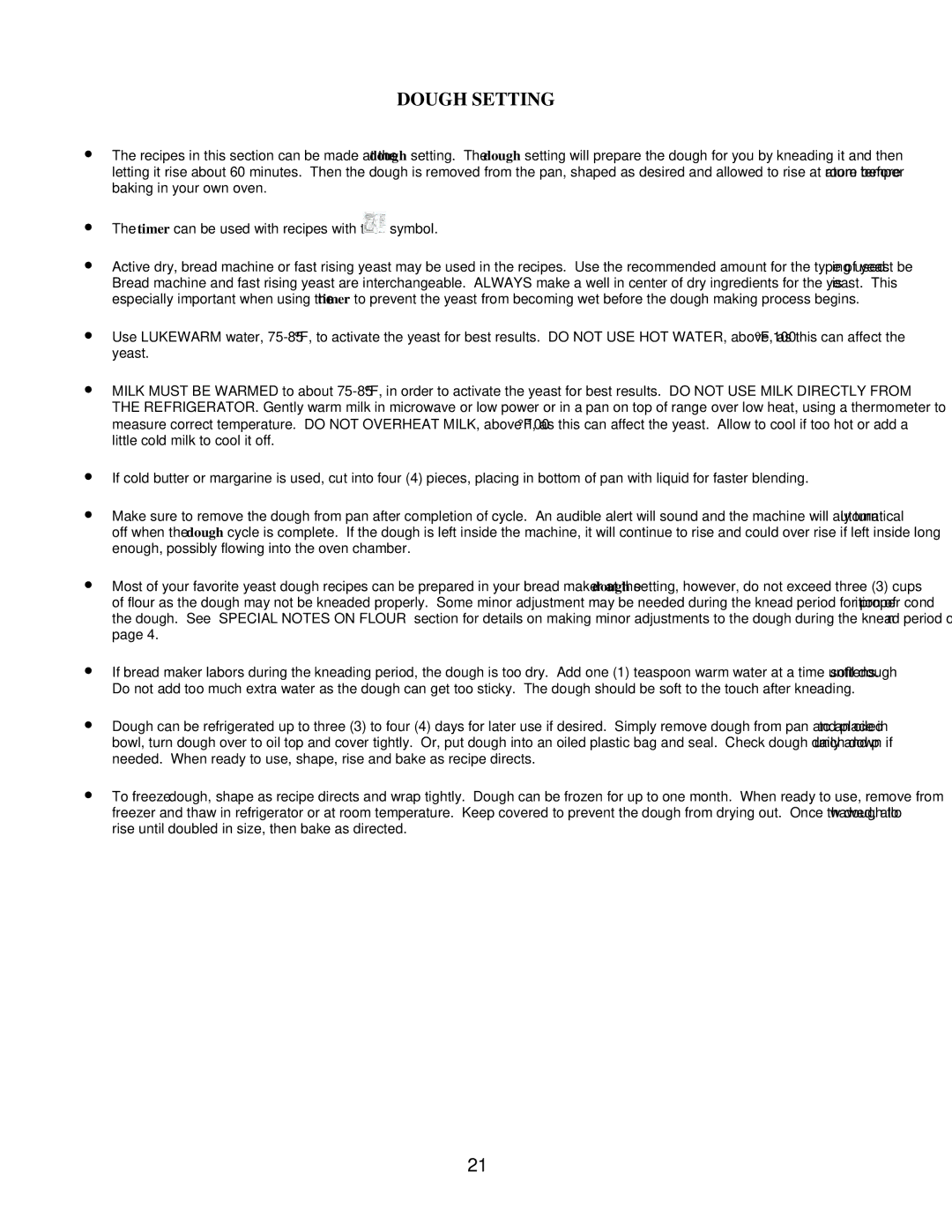DOUGH SETTING
•The recipes in this section can be made at the dough setting. The dough setting will prepare the dough for you by kneading it and then letting it rise about 60 minutes. Then the dough is removed from the pan, shaped as desired and allowed to rise at room temperature before baking in your own oven.
•
•
The timer can be used with recipes with the ![]() symbol.
symbol.
Active dry, bread machine or fast rising yeast may be used in the recipes. Use the recommended amount for the type of yeast being used. Bread machine and fast rising yeast are interchangeable. ALWAYS make a well in center of dry ingredients for the yeast. This is especially important when using the timer to prevent the yeast from becoming wet before the dough making process begins.
•
•
•
•
•
•
•
•
Use LUKEWARM water,
MILK MUST BE WARMED to about
If cold butter or margarine is used, cut into four (4) pieces, placing in bottom of pan with liquid for faster blending.
Make sure to remove the dough from pan after completion of cycle. An audible alert will sound and the machine will automatically turn off when the dough cycle is complete. If the dough is left inside the machine, it will continue to rise and could over rise if left inside long enough, possibly flowing into the oven chamber.
Most of your favorite yeast dough recipes can be prepared in your bread maker at the dough setting, however, do not exceed three (3) cups of flour as the dough may not be kneaded properly. Some minor adjustment may be needed during the knead period for proper condition of the dough. See “SPECIAL NOTES ON FLOUR” section for details on making minor adjustments to the dough during the knead period on page 4.
If bread maker labors during the kneading period, the dough is too dry. Add one (1) teaspoon warm water at a time until dough softens. Do not add too much extra water as the dough can get too sticky. The dough should be soft to the touch after kneading.
Dough can be refrigerated up to three (3) to four (4) days for later use if desired. Simply remove dough from pan and place into an oiled bowl, turn dough over to oil top and cover tightly. Or, put dough into an oiled plastic bag and seal. Check dough daily and punch down if needed. When ready to use, shape, rise and bake as recipe directs.
To freeze dough, shape as recipe directs and wrap tightly. Dough can be frozen for up to one month. When ready to use, remove from freezer and thaw in refrigerator or at room temperature. Keep covered to prevent the dough from drying out. Once thawed, allow dough to rise until doubled in size, then bake as directed.
21
